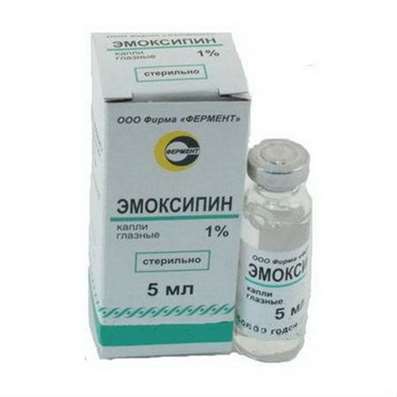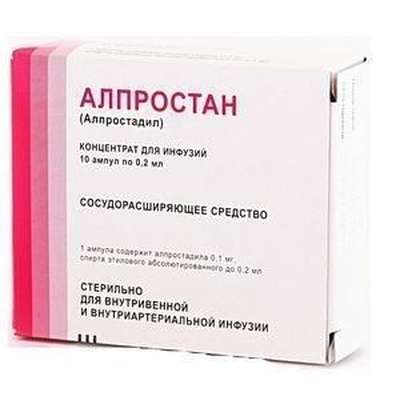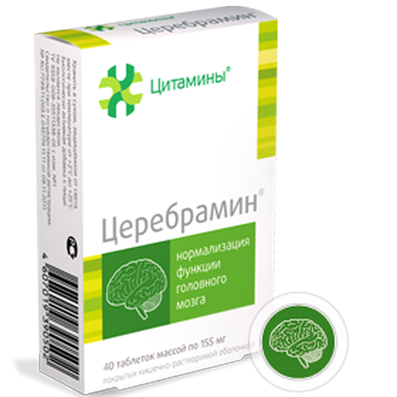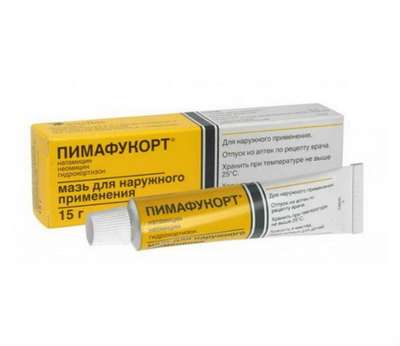Instruction for use: Grandaxin
I want this, give me price
Dosage form: Tablets
Active substance: Tofisopam*
ATX
N05BA23 Tofisopam
Pharmacological group:
Anxiolytics
The nosological classification (ICD-10)
F10.3 Abstinence: Alcohol withdrawal syndrome; Abstinence syndrome; Abstinence syndrome with alcoholism; Abstinence; Alcohol abstinence; Alcohol withdrawal status; Alcohol withdrawal syndrome; Postabstinctive disorder; Post-abstinence condition; Hangover syndrome; Abstinence syndrome; Alcohol abstinence syndrome; Alcohol withdrawal syndrome; Abstinence condition
F10.4 Abstinent state with delirium: Alcoholic delirium; White fever alcoholic; Delirium; Delirious condition with alcoholism and drug addiction
F32 Depressive episode: Adynamic subdepression; Astheno-adynamic subdepressive states; Asthenodepressive disorder; Astheno-depressive disorder; Asthenodepressive state; Astheno-depressive state; Major Depressive Disorder; Vyaloapatichesky depression with retardation; Double depression; Depressive pseudodement; Depressive illness; Depressive mood disorder; Depressive disorder; Depressive mood disorder; Depressive state; Depressive disorders; Depressive syndrome; Depressive syndrome larviated; Depressive syndrome with psychoses; Depressed masks; Depression; Depression Depletion; Depression with the phenomena of inhibition within the framework of cyclothymia; Depression is smiling; Involutional depression; Involutionary melancholy; Involutional depression; Manic-depressive disorder; Masked Depression; Melancholic Attack; Neurotic depression; Neurotic depression; Shallow Depression; Organic depression; Organic depressive syndrome; Simple depression; Simple melancholic syndrome; Psychogenic depression; Reactive depression; Reactive depression with moderate psychopathological symptoms; Reactive depressive states; Reactive depression; Recurrent depression; Seasonal depressive syndrome; Severostatic depression; Senile Depression; Senile Depression; Symptomatic Depression; Somatogenic depression; Cyclotymic depression; Exogenous Depression; Endogenous depression; Endogenous Depressive Conditions; Endogenous Depression; Endogenous depressive syndrome
F33 Recurrent depressive disorder: Major depressive disorder; Secondary depression; Double depression; Depressive pseudodement; Depressive mood disorder; Depressive disorder; Depressive mood disorder; Depressive state; Depressive syndrome; Depressed masks; Depression; Depression is smiling; Involutional depression; Involutional depression; Masked Depression; Melancholic Attack; Reactive depression; Reactive depression with moderate psychopathological symptoms; Reactive depressive states; Exogenous Depression; Endogenous depression; Endogenous Depressive Conditions; Endogenous Depression; Endogenous depressive syndrome
F41.9 Anxiety disorder, unspecified: Neurotic disorders with anxiety syndrome; Severe anxiety; Neuro-like symptomatology; Neuro-like disorders; Neuro-like conditions; Neuroses with anxiety symptoms; Neuroses with a sense of anxiety; Acute situational and stress anxiety; Acute attack of anxiety; Severe Anxiety; Situational Anxiety Disorder; State of anxiety; Anxious and delusional component; Alarming state; Anxiety; Anxiety Disorders; Anxiety syndrome; Sense of anxiety; Alarm conditions; Chronic neurotic anxiety; Susto; Psychopathy with a predominance of anxiety and anxiety; Anxiety disorders in neurotic and neurosis-like states; Anxious neuroses; Anxious and delusional state; Acute situational stress alarm; Depressed mood with elements of anxiety
F42.0 Predominantly obsessive thoughts or reflections: Obsession neurosis; Obsessive-compulsive disorder; Obsessive thoughts and actions; Obsession state; Mental Chewing Gum; Obsessive thoughts; Obsessive experiences; Obsessive fears
F43.1 Post-traumatic stress disorder: Combat fatigue; Catastrophe Syndrome; The survivor's syndrome; Traumatic isolation; Traumatic neurosis; Traumatic syndrome; Post-traumatic stress disorder
F48 Other neurotic disorders: Neurosis; Neurological diseases; Neurotic disorders; Neurotic condition; Psychoneurosis; Anxious-Neurotic Conditions; Chronic neurotic disorders; Emotional reactive disorders
G70 Myasthenia gravis and other disorders of the neuromuscular synapse: Myasthenic syndrome; Myasthenic syndromes; Myasthenia gravis; Myasthenic syndrome; Severe myasthenia gravis (Myasthenia gravis)
G71.0 Muscular dystrophy: Duchenne muscular dystrophy; Duchenne muscular dystrophy; Mioatrofiya; Duchenne's disease; Landuzi-Dejerine of shoulder-facial muscular dystrophy; Neurogenic muscular atrophy; Myopathy psevdogipertroficheskaya; Duchenne Myopathy psevdogipertroficheskaya; Progressive muscular dystrophy; Psevdogipertroficheskaya Duchenne muscular dystrophy; Psevdogipertrofichesky muscle paralysis; Duchenne Paralysis; Becker muscular dystrophy; Limb-girdle muscular dystrophy; Of shoulder-facial muscular dystrophy, Dejerine Landuzi
G72 Other myopathies: Myopathy; Primary muscular dystrophy
G90 Disorders of autonomic [autonomous] nervous system: angiodystonia; vasovegetative manifestations; vasomotor dystonia; vegetative dystonia; autonomic dysfunction; vegetative lability; Vegetative-vascular disorders; autonomic dysfunction; vasoneurosis; Vegetative-vascular dystonia; vegetative-vascular disorders; Vegetative-vascular disorders; Dystonia vegetovascular; Dystonia neurocirculatory; neuro disorder; Cardiopsychoneurosis; Neurocirculatory dystonia of hypertensive type; Primary neurovegetative syndrome; The syndrome of vegetative dystonia
M62.5 Depletion and atrophy of muscles, not elsewhere classified: Adynia; Muscle Atrophy; Muscle weakness; Trophic changes in tissues; Muscle weakness in polymyositis; Primary muscular dystrophy; Peroneal muscular atrophy; Neuromuscular weakness; Neuromuscular disorders
N94.3 Premenstrual tension syndrome: Pronounced premenstrual syndrome; Menstrual psychosomatic disorder; Menstrual syndrome; Premenstrual tension; Premenstrual status; Premenstrual period; Premenstrual syndrome; Menstruation syndrome
N95.1 menopausal and menopausal status of women: Atrophy of the mucosa of the lower genital tract, caused by estrogen deficiency; Vaginal dryness; Autonomic dysfunction in women; gipoestrogeniya state; Deficiency of estrogen in menopausal women; Degenerative changes of the mucous membrane in the menopause; Natural menopause; an intact uterus; climacteric; Menopause women; Menopause in women; menopausal depression; Climacteric ovarian dysfunction; Menopause; Climacteric neurosis; Menopause; Menopausal symptoms complicated psychovegetative; Climacteric syndrome; Climacteric vegetative disorders; Climacteric psychosomatic disorder; menopausal disorders; Menopausal disorders in women; menopausal condition; Climacteric vascular disorders; Menopause; Menopausal vasomotor symptoms; menopausal period; Lack of estrogen; Feeling the heat; Pathological menopause; perimenopause; menopause; postmenopausal; Premature menopause; premenopauznom period; tides; hot flashes; flushing in the Meno and postmenopausal; Hot flashes / hot flashes in menopause; Heart attack during menopause; Early menopause in women; Disorders of menopause; climacteric syndrome; Vascular complications of menopause; Physiological menopause; Estrogendefitsitnye state; premature Menopause
R07.2 Pain in the heart: neuroses of the heart; Myocardial ischemic pain; Pain syndrome in myocardial infarction; cardialgia; cardioneurosis; Cardiac syndrome; Pain in cardiac patients; Cardialgia on background dyshormonal myocardial dystrophy; Functional cardialgia; Psevdostenokardiya; pericardial pain
R45.3 Demoralization and apathy: Apatiko-Abulian phenomenon; Apathy; Apatobulic conditions; Apathoabulic Disorder; Apatobulic state; Indifference; Bezynitsiativnost; Vyaloapaticheskoe condition; Sluggish-apathic state; Deficiency of motivations and motivations; Lack of initiative; Lack of emotionality and avoidance of communication; Feeling of low value; Decreased initiative; Decreased motivation; Reduced initiative
R53 Malfunction and fatigue: Asthenic disorders; Asthenic conditions; Asthenic phenomena; Asthenic syndrome; Asthenic disorder; Asthenic state; Asthenic phenomenon; Asthenia; Astheno-adynamic subdepressive state; Asthenovegetative symptoms; Asthenic-autonomic symptomatology; Asthenic autonomic disorder; Asthenodepressive disorder; Astheno-depressive disorder; Asthenodepressive state; Astheno-depressive state; Asthenoneurotic disorder; Astheno-neurotic state; Fast fatiguability; Flu of young workaholics; Influenza yuppie; Diabetic asthenia; Exhaustion of the nervous system; Exhaustion physical; Malaise; Nervous depletion with depression; General mental fatigue; General physical fatigue; General malaise; Pathological fatigue; Increased fatigue; Mental fatigue; Mental exhaustion; Astenovegetative Syndrome; Chronic Fatigue Syndrome; Decrease in total activity; The state of increased fatigue; Conditions of increased fatigue; Mental fatigue; Prostration; Fatigue; Fatigability; Physical fatigue; Physical and mental fatigue; Physical overwork; Functional asthenic conditions; Chronic fatigue; Chronic asthenic conditions
Composition
Tablets - 1 table.
active substance: tofizopam 50 mg
auxiliary substances: stearic acid - 1 mg; magnesium stearate - 1 mg; gelatin - 3,5 mg; talcum - 2 mg; potato starch - 20.5 mg; lactose monohydrate - 92 mg; MCC - 10 mg
Description of dosage form
Tablets: round, flat, in the form of a disc, white or grayish-white, with a facet, with a risk on one side and engraving "GRANDAX" - on the other, without or almost no smell.
Pharmachologic effect
Mode of action - anxiolytic.
Pharmacodynamics
The drug from the group of benzodiazepine derivatives (an atypical benzodiazepine derivative) has an anxiolytic effect, practically not accompanied by sedative, miorelaxing, anticonvulsant action. It is a psycho-vegetative regulator, it removes various forms of vegetative disorders. Has moderate stimulating activity.
Due to the lack of a muscle relaxant effect, the drug can be used in patients with myopathy and myasthenia gravis. Due to the atypical nature of the chemical structure, in contrast to classical benzodiazepine derivatives, GrandaxinŽ in therapeutic doses practically does not cause the development of physical, mental dependence and withdrawal syndrome.
GrandaxinŽ refers to daytime anxiolytics.
Pharmacokinetics
When ingested quickly and almost completely absorbed from the digestive tract. Cmax in the blood is reached within 2 hours, after which the concentration in the plasma decreases monoexponentially. Tofizopam does not cumulate in the body. Metabolites do not have pharmacological activity. It is excreted mainly in urine (60-80%) in the form of conjugates with glucuronic acid and to a lesser extent (about 30%) with feces. T1 / 2 is 6-8 hours.
Indications of the drug Grandaxin
neuroses and neurosis-like conditions (conditions accompanied by emotional stress, autonomic disorders, mild anxiety, apathy, decreased activity, obsessive experiences);
reactive depression with mild psychopathological symptoms;
mental disorder disorder (post-traumatic stress disorder);
climacteric syndrome (as an independent tool, as well as in combination with hormonal drugs);
premenstrual syndrome;
cardialgia (in the form of monotherapy or in combination with other drugs);
alcohol withdrawal syndrome;
myasthenia, myopathy, neurogenic muscular atrophy and other pathological conditions with secondary neurotic symptoms, when anxiolytics with a pronounced myorelaxing action are contraindicated.
Contraindications
hypersensitivity to the active or any other component of the drug or any other benzodiazepines;
conditions accompanied by severe psychomotor agitation, aggressiveness or severe depression;
Decompensated respiratory failure;
I trimester of pregnancy;
period of lactation;
respiratory failure syndrome in a dream (in the anamnesis);
simultaneous application with tacrolimus, sirolimus, cyclosporin;
intolerance of galactose, congenital insufficiency of lactase or glucose malabsorption syndrome and galactose (the preparation contains lactose monohydrate).
With caution: decompensated chronic respiratory distress, acute respiratory failure in history, angle-closure glaucoma, epilepsy, organic brain damage (eg, atherosclerosis).
Application in pregnancy and breastfeeding
Contraindicated in the first trimester of pregnancy. For the duration of treatment, breastfeeding should be stopped.
Side effects
From the digestive tract: a decrease in appetite, constipation, increased separation of gases, nausea, dry mouth. In some cases, congestive jaundice is possible.
From the side of the central nervous system: there may be headache, insomnia, increased irritability, psychomotor agitation, confusion, convulsive seizures may occur in patients with epilepsy.
Allergic reactions: exanthema, scarlatina-like exanthema, pruritus.
From the musculoskeletal system: muscle tension, muscle pain.
On the part of the respiratory system: respiratory depression.
Interaction
The simultaneous use of tacrolimus, sirolimus, cyclosporine and tofizopama is contraindicated. Plasma concentrations of drugs that are metabolized by CYP3A4 may increase with simultaneous admission with tofizopam.
The use of tofizopam with drugs that suppress the functions of the central nervous system (analgesics, general anesthetics, antidepressants, H1-antihistamines, sedatives, hypnotics, antipsychotic), enhances their effects (eg, sedation or respiratory depression).
Inducers of hepatic enzymes (alcohol, nicotine, barbiturates, antiepileptic drugs) can enhance the metabolism of tofizopam, which can lead to a decrease in its concentration in the blood plasma and a weakening of the therapeutic effect.
Some antifungal drugs (ketoconazole, itraconazole) can slow the hepatic metabolism of tofizopam, which leads to an increase in its concentration in the blood plasma.
Some antihypertensive drugs (clonidine, calcium channel antagonists) can enhance the effects of tofizopam. Beta-blockers can slow the metabolism of the drug, but this effect has no clinical significance.
Tofizopam can increase the level of digoxin in the blood plasma.
Benzodiazepines may affect the anticoagulant effect of warfarin.
Long-term use of disulfiram can inhibit tofizopam metabolism.
Antacids can affect the absorption of Tofizopam. Cimetidine and omeprazole inhibit tofizopam metabolism.
Oral contraceptives can reduce the intensity of tofosopam metabolism.
Tofizopam weakens the depressant effect of alcohol on the central nervous system.
Dosing and Administration
Inside.
The dosage regimen is set individually, taking into account the patient's condition, clinical form of the disease and individual sensitivity to the drug. Adults appoint 50-100 mg (1-2 tablets) 1-3 times a day. With occasional use, you can take 1-2 tablets. The maximum daily dose is 300 mg.
For elderly patients and patients with renal failure, the daily dose is reduced approximately 2-fold.
Overdose
Symptoms: the effects of suppression of the function of the central nervous system manifest only after taking high doses (50-120 mg / kg). Such doses may cause vomiting, confusion, coma, respiratory depression and / or epileptic seizures.
Treatment: with pronounced suppression of the functions of the central nervous system is not recommended to induce vomiting. Rinse the stomach. The purpose of activated charcoal helps to reduce the absorption of the drug. You should constantly monitor the basic physiological parameters and apply appropriate symptomatic therapy. When respiratory depression can be carried out ventilation. Introduction of CNS stimulants is not recommended. Hypotension is best eliminated by intravenous infusion of liquids and transfer of the patient to Trendelenburg position. If these measures do not restore normal blood pressure, you can enter dopamine or norepinephrine. Dialysis and induced diuresis are ineffective.
As an antagonist, Flumazenil can be administered, however, its use in the overdose of Tofizopam has not been clinically tested.
Special instructions
It should be noted that in patients with mental retardation, elderly patients, as well as those with impaired renal and / or liver function, side effects may be more likely than other patients.
It is not recommended to apply tofizopam for chronic psychosis, phobia or obsessive conditions. In these cases, the risk of suicidal attempts and aggressive behavior increases. Therefore, tofizopam is not recommended as a monotherapy for depression or depression accompanied by anxiety.
Care must be taken when treating patients with depersonalization, as well as organic brain damage (eg, atherosclerosis).
In patients with epilepsy, tofisopam may increase the threshold of convulsive readiness.
Each GrandaxinŽ tablet contains 92 mg of lactose, which should be taken into account for patients with lactose intolerance (see "Contraindications").
Influence on the ability to drive vehicles and work with machinery. GrandaxinŽ does not significantly reduce attention and the ability to concentrate.
Release form
Tablets, 50 mg. For 10 tab. in the blister pack. 2 or 6 blisters in a cardboard box.
Conditions of leave from pharmacies
On prescription.
Storage conditions of the drug Grandaxin
At a temperature of 15-25 ° C.
Keep out of the reach of children.
Shelf life of the drug Grandaxin
5 years.
Do not use after the expiry date printed on the package.

 Cart
Cart





